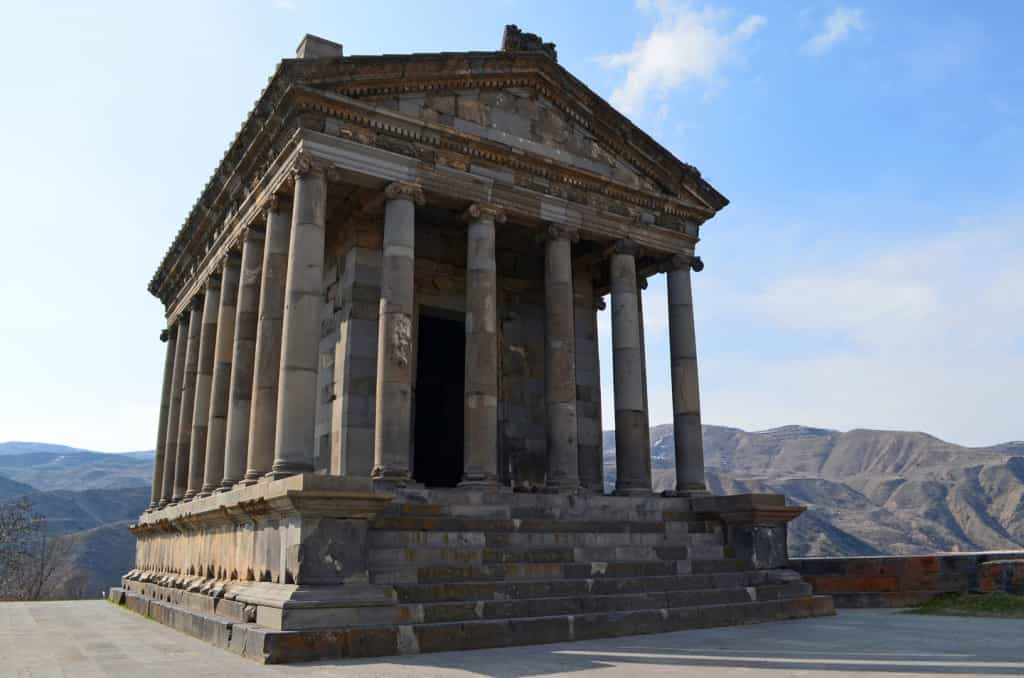I usually write about a country after my visit is done. Sometimes, I am a couple of weeks late. In this case, I had decided to finish my Armenia story this week-end. As it happens, the last 48 hours saw the worse violence between “Armenia” and Azerbaijan since the end of the Nagorno-Karabakh war in 1994. Here is the situation in a nutshell:
1) There have been tensions and wars for centuries between the Armenians, the first people to adopt Christianity as a State Religion in the early 4th century, and the Turkic Azerbaijanis, their Muslim, albeit now very secular, neighbours.
2) Before and during the collapse of the USSR, the ethnic Armenians of the Nagorno-Karabakh region demanded their independence. Protests and sporadic violence irrupted into an all out war between 1992 and 1994. 30,000 people died and vast numbers were forced from their homes. Nagorno-Karabakh went from being 75% Armenian to nearly 100%. Almost all Armenians left Azerbaijan and vice-versa.
3) Except for other self-declared breakaway territories like Abkhazia or Transnistria (which I visited), no country recognizes the Republic of Nagorno-Karabakh. It is de jure part of Azerbaijan, but de facto independent since 1994. I even heard some Armenians refer to it as part of Armenia.
4) In the first paragraph, I referred to “Armenia”. I used the quotes because the conflict is nominally between NK and Azerbaijan, but NK is massively supported by Armenia, financially and militarily.
5) Turkey is 100% on the side of Azerbaijan, among many reasons because they share a similar and mutually intelligible language, a religion and a hatred of Armenians. Russia has a good but complicated relation with Azerbaijan. I believe they are closer to Armenia and have several military bases in the country. But they sell weapons to both sides. Iran has historically been more on Armenia’s side, but seems to be more on the fence these days. This is a little surprising since Iran and Azerbaijan are the only 2 majority Shia countries in the world and there are more ethnic Azerbaijanis in Iran than in Azerbaijan. Perhaps this shows that although I mentioned the religious differences, they do not have the same importance here as they have in Middle Eastern conflicts, for example.
6) Since the 1994 cease-fire there have been periodic border clashes, but on April 1st 2016, heavy fighting started again. As I am writing this about 48 hours later, the fighting is ongoing, although Azerbaijan has just announced a unilateral ceasefire.
A street sign downtown Yerevan. I don’t know what it says, but explanations are not really required.
Since Azerbaijan and Armenia do not have formal relations and the border is closed, I actually went to Georgia first by overnight train. I spent a couple of days there, but I will write about it later. I then took the bus to Yerevan, the capital of Armenia. It was quite the experience.
First, before crossing the border, everyone was buying soap. Like, tens of kilos of soap. I tried to understand why but couldn’t find an answer. Taxes? Cheaper? Our minibus was also filled to capacity with the vast quantities of luggage carried by three women. According to an older Ukrainian couple who could talk to them in Russian, they were likely involved in some sort of minor contraband headed for Turkey. Since the land border is closed, I don’t know if this makes any sense, but the point is that they looked suspicious.
The Caucasus border procedures for westerners, in two words.
Azerbaijan: Efficient, bureaucratic.
Georgia: Efficient, easy.
Armenia: Chaos, more chaos.
I waited in line for a good 20 minutes to be told by the border agent that I needed a visa on arrival, something I already knew. I said “how much”? He said they were sold somewhere else. I had no idea and there were no signs to that effect. So I walked to a different building and waited in line, filled some paperwork, paid the fee and went back to do the 20 minute line again, because the agent who sold the visa was not authorized to stamp it. I found the minibus and apologized to the Ukrainian couple for delaying everybody (they were the only ones who spoke some English). They said not to worry, the bus was not going anywhere. It had gone through immigration easily, but was stuck at customs, certainly because of the unusual amount of luggage.
In the end, everyone had to open their suitcases so the border guard (just outside of the photo) could see what was inside. With nothing else to do, all the passengers gathered around to see what people had in their bags. Then we waited again forever, probably while the guards decided what “tax” the 3 women had to pay. During this whole thing I just waited in the shade a few meters away. When the driver got back in the bus, I boarded and we took off, my bag completely unchecked by anyone. In total, crossing the border took 1.5 – 2 hours
Now don’t get me wrong, Armenia is a very pleasant country to visit, but it has its quirks. Superficially, if I had to make a light-hearted comparison, I would say it is the Albania of the Caucasus.
The Ukrainian couple asked me if I wanted to share a taxi to visit attractions outside the capital. I agreed and we spend the next morning touring around. We bought the driver lunch and paid him US$20, for 5 hours. Not a price I would have been able to negotiate in English. This highlights the fact that Armenia is the poorest country in the Caucasus. The political situation hurts a lot. Turkey imposes various sanctions on Armenia to the West and there are no relations with Azerbaijan to the East. Because of this, the pipeline built between Baku and Turkey had to do a long and costly detour through Georgia. As a result, Georgia gets large annual transit fees, and Armenia gets nothing.
Although I have no facts to back this up, I also noticed in several former Soviet Republics, especially the poor ones, that young women are often very well dressed, with hair and make-up all done up, even when the occasion doesn’t warrant it. Some of my Eastern European friends have explained that for many, the best prospect in life is marrying a rich guy, so they never want to miss an opportunity by looking scruffy. It was certainly the case in Moldova and Belarus (although the later is not that poor).
I know this is a crappy (and a little creepy) picture, but you will have to take my word for it: these beautiful women would never work at cashing and bagging groceries in North America. Hostesses in a nice restaurant or barmaids in a trendy bar would be far more likely – and far more lucrative – options. But when another tourist and I mentioned this in front of our hotel manager, she said dismissively: “I would never work in bar”. Social conservatism was the issue here, not working conditions. Serving drinks to strange men is apparently not a “proper” occupation for some more traditional Armenian women.
The people of Turkey, Russia and Iran have long had a passion in common; invading the Caucasus. But I didn’t know the Romans also shared that particular hobby. In fact, I had to Google a map of the Roman Empire to realize that it had expanded so far to the North-East (in the 2nd century it even controlled a bit of territory that is modern day Russia). This is the Temple of Garni, the only such surviving structure in Armenia. Built in the 1st century, it honours the sun God Mirh. For my follow Celts, this false God roughly corresponds to the real God Belenos. Continue reading





